I was contacted recently by The Food Network, about filming a segment for the show “Best Thing I Ever Ate” at Le Pichet. Seems that Alton Brown, the host of “Good Eats” and front man for “Iron Chef America” was in for dinner at Le Pichet late last year and was very much taken by our Raclette Savoyarde. So taken, in fact that he nominated our Raclette for a feature on “Best Thing I Ever Ate” and the Food Network decided to take him up on it. The filming is tentatively scheduled for March-April 2011, but I have no idea when the segment will be featured on the show…no doubt just in time for Raclette to leave the menu as we head into Spring and Summer.
I was very pleased that they selected this dish because in many ways it is typical of how we like to cook at both Le Pichet and Café Presse. Raclette is all about the quality of the ingredients. The actual preparation we do is minimal, less even than most rustic, traditional dishes. Simple ingredients, simply prepared and presented is really the central concept of our cooking. Our recipe for Raclette Savoyarde can be found in the Recipe section.
Raclette, along with fondue, is one of the signature dishes of the French Alps. I have read various accounts of its origins (some of which say that it is originally from Switzerland! I, of course, discarded that hypothesis out of hand) but generally it is thought to have originated in the French Savoie, in the northern foothills of the Alps near where the borders of France, Germany and Switzerland meet. It traditionally consists of melted cheese served with a selection of cold cuts, yellow potatoes steamed in their skins, cornichons, pickled onions all in the company of lots of the crisp white wine of the Savoie. To make raclette, the wheel of cheese is mounted into a specially designed holder, which keeps the cut face a specific distance from a wood fire or broiler. The term “raclette” refers to the device that is used to scrape, or “racler” in French, the hot, bubbly cheese onto the waiting plates of the diners. The name “raclette” is also applied to the cheese that is used in the dish. Raclette is a cow’s milk, semi-firm cheese that is formed in 5kg wheels.
It has a rind that is washed with brine and although the rind is often removed before cooking, the added pungency that comes fro this washing is evident. The best raclette is made with raw milk in the high pastures of the Alps, although these days, low quality pasteurized raclette is made in industrial dairies throughout France.
Since toasting an entire 11# wheel of cheese next to a wood fire is a bit too ambitious for a home meal, French families will often instead use a home raclette machine. This device is somewhat akin to a broiler oven with two levels. It is placed in the middle of the dinner table to allow diners to heat their own cheese in individual skillets without leaving their seats. Generally, the lower level is where the cheese gets broiled and the top level is a holding plate to keep the cheese warm once it is melted. Each person fills their skillet with cheese then places it under the broiler and brings it to the degree of melt-y-ness that they prefer. Raclette machines are pretty widely available now in the U.S.; I have seen them at Sur la Table for example. I have also had pretty good success in home raclette making just using an old American broiler oven and little steel skillets…individual blini pans are perfect size or the smallest cast iron skillets will work as well.
Equipment aside, I cannot stress enough the importance of top quality ingredients when making raclette. At Le Pichet and Café Presse, we use raw milk raclette cheese made in the Alps by a dairy called “Les Fruitieres des Bornes” which is available in Seattle from Corsican Cellars. For me, it is the perfect combination of robust flavor and smooth melting characteristics.
After that, a nice selection of cured and cooked hams and maybe couple of different hard sausages, all thinly sliced, are arranged on platters.
The first time I ever tried raclette was during a visit to meet the French part of the Drohmann family in Flaxlanden, near Mulhouse in Alsace, in the ’90s. My wife and I were treated to a family raclette feast in the company of Drohmanns from France, Germany and Switzerland, all of whom spoke Alsatian and at least some French, although not very much English. The French Drohmanns use a raclette machine and pair the melted cheese with the wonderful charcuterie of their region. The white wines of Alsace go pretty well with raclette as well. Note to self: when the Alsatian relatives say you simply must sample all 30 flavors of their home-made schnapps, put the brakes on after five or six.
We have since tried raclette in restaurants in France as well, and it has become just about my favorite dish for the kind of brittle cold, mid-winter Paris evenings that bring out my inner Montaignard, crying out for something warm to fill my belly.
You can try Le Pichet’s Raclette Savoyarde from late December to the beginning of Spring. Every winter Cafe Presse also features Raclette Savoyarde as well as a vegetarian version served with steamed potatoes, sliced pears and apples and toasted walnuts.
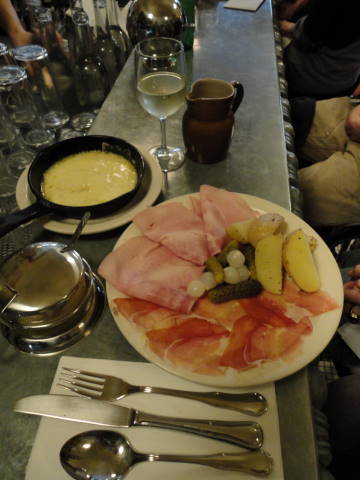
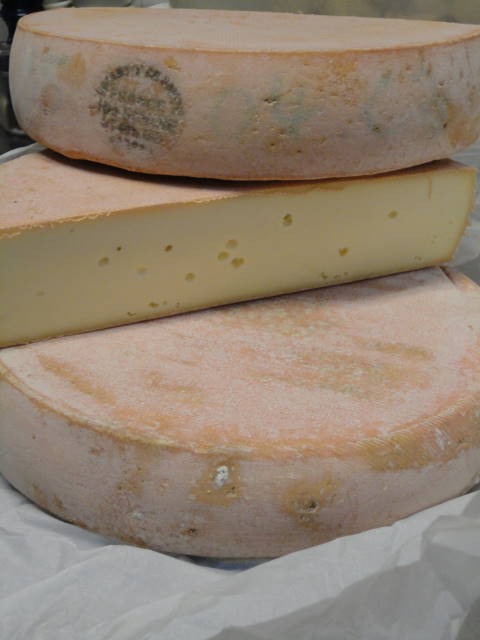
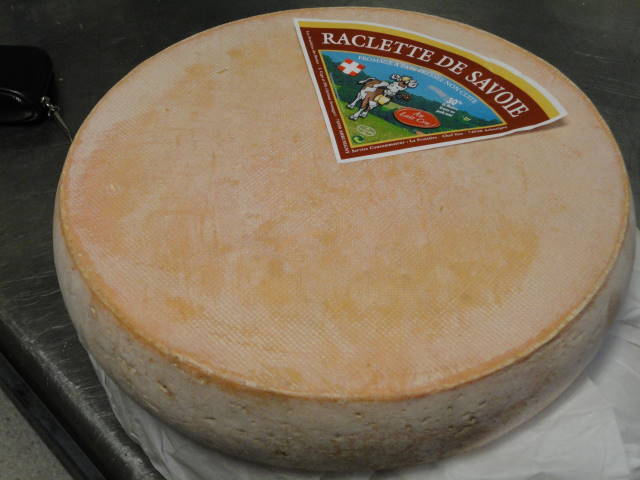
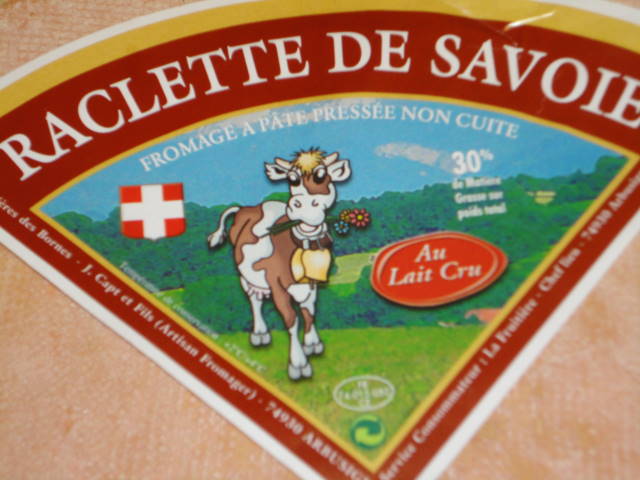
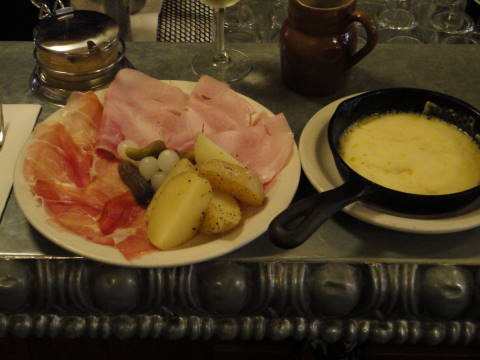
It was a mouthwatering presentation! Congratulations Jim!
Raclette is not French. Raclette is a typical Swiss cheese/dish from the canton of Valais. This was even an issue brought to court : http://www.swissinfo.ch/fre/-raclette–est-un-plat–pas-un-fromage/6233348
Check. Your. Facts.
Point taken and thanks for the link to an interesting article. However, legal disputes aside, raclette is common on both sides of the border and the name raclette designates no longer only the dish but is routinely applied to cheeses produced both in France and in Switzerland, including some very good artisan cheeses.